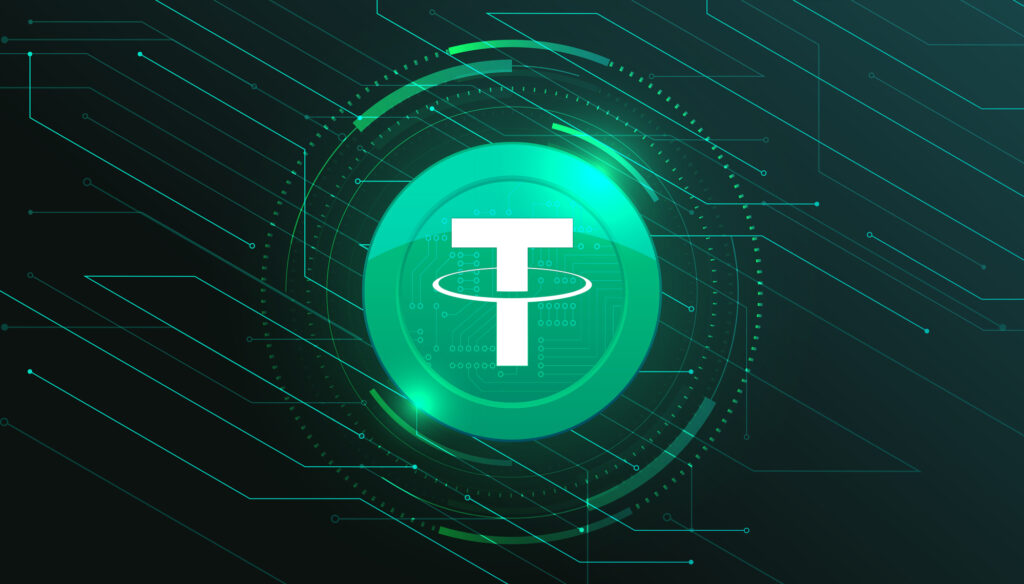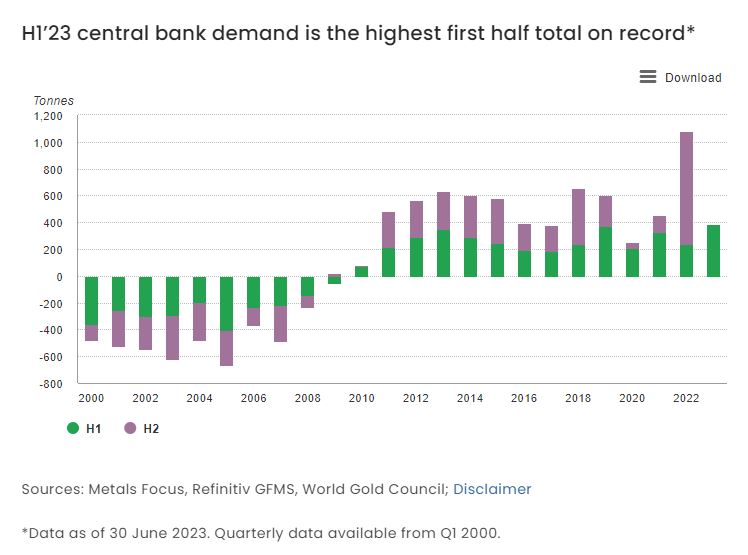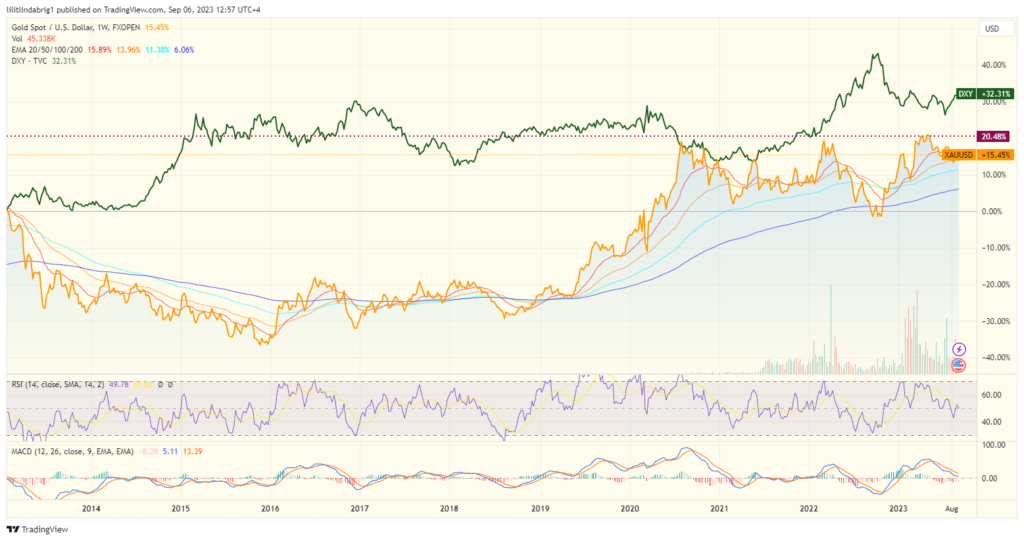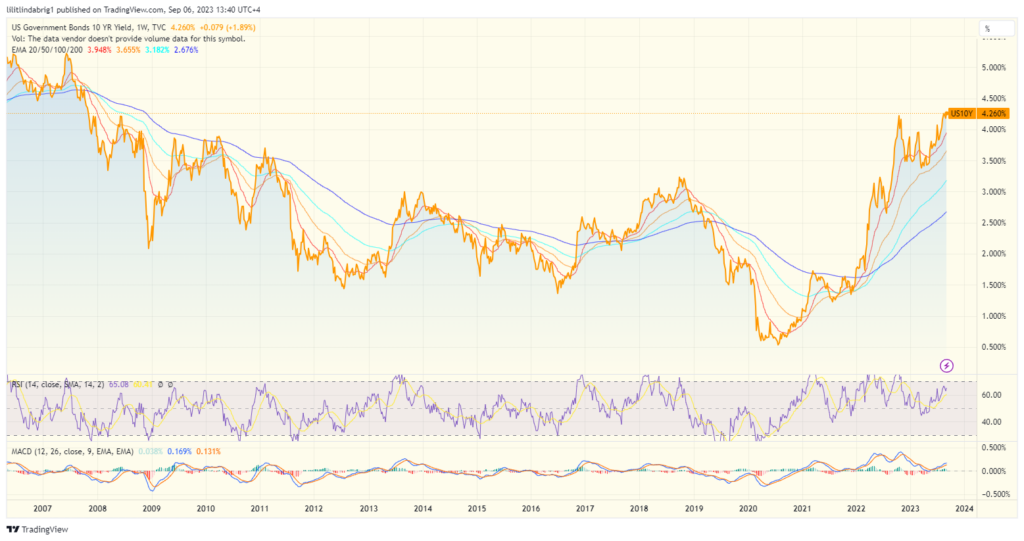Key Takeaways:
- Tether increased its US Treasury holdings from $53 billion in Q1/2023 to $72.5 billion in Q2.
- Global de-dollarization and increasing demand for gold could dampen Tether’s profits.
- Recurring debt ceiling issues also threaten the company’s balance sheet.

YEREVAN (CoinChapter.com) — According to Tether’s Q2/2023 earning report, the company increased its exposure to US Treasuries. The holdings hit $72.5 billion, an increase of 35% quarter-over-quarter.
The Chief Technology Officer Paolo Ardoino commented that Tether is now the “top 22 buyer globally, above United Arab Emirates, Mexico, Australia, Spain.”
Meanwhile, the stablecoin giant might want to think twice if it’s the right time to increase US debt holdings. Here are three reasons why the venture could be risky.
#1 De-Dollarization Across the Globe – Will Tether Suffer?
The shifting geopolitical forces brought on by the Russia-Ukraine crisis and the persisting effects of the COVID-19 pandemic have jeopardized the US dollar’s global hegemony. For now, the greenback is the world’s primary reserve currency and the most widely used currency for trade and other international transactions.
However, global markets have decreased their dependency on the dollar. China’s US Treasury reserves dropped to $835 billion, their lowest level in 14 years.
Additionally, the Chinese Communist Party (CCP) boosted its nondollar trades in 2023 to prop up the Chinese yuan (CNY). The leader of the CCP, Xi Jinping, publically questioned the logic behind everyone accepting the greenback as a reserve currency.
“Every night I ask myself, why are all countries obliged to do their trade backed by the dollar? Why can’t we do our trade backed by our currency? Who decided to use the dollar as a currency after the gold standard disappeared?”
he asked
In March 2023, Russia announced it would also use the Chinese yuan instead of the dollar to settle its trade with countries in Asia, Africa, and Latin America. During his official visit to Beijing, Brazilian President Luiz Inácio Lula da Silva urged developing nations to replace the American currency with their own.
During the meeting on March 28 in Indonesia, The Association of Southeast Asian Nations, or ASEAN, reconsidered using the dollar as their trade currency. Instead, the ASEAN Finance Ministers and Central Bank Governors moved for settlements in local currencies.
All the calls for de-dollarization worldwide mean that the greenback might soon cease to be a safe haven for the global economy. Thus, Tether’s increased exposure could mean greater risk for its stablecoin.
#2 Increasing Demand for Gold
According to the data from the World Gold Council, 2023 brought the highest H1 on record for central bank gold demand, which totaled 387t. Notably, central bank net buying slowed to 103t in Q2/2023, down 35% year-over-year.
However, WGC research pointed out that it “has done little to diminish the strong central bank buying in 2023.”

Historically, gold remains a haven for investors wishing to hedge against inflation, market instability, and political turbulence. Thus, the heightened demand by institutional investors could indicate bearish expectations of further instability.
Tether has declared $3.4 billion in gold reserves in Q1. The company also launched stablecoin XAU₮ pegged to gold price, a “gold on-demand, with all of the benefits of blockchain.” However, gold remains in inverse correlation with the dollar index, which could hurt Tether in the long run due to its Treasury bills exposure.

#3 Recurring Debt Ceiling Issues Could Hurt Tether
The US government removed a narrow escape from default in May 2023, but the market consequences remain relevant.
In detail, The US Treasury boosted the size of its quarterly bond sales in early August for the first time in over two years to help finance an alarming surge in budget deficits caused by the Fed’s mounting hawkish policies against inflation.
As a result of persistent instability, Fitch Ratings, one of the three nationally recognized statistical rating organizations designated by the US Securities and Exchange Commission (SEC), started August off by lowering the US rating from its AAA status, i.e., the highest rating that an agency gives to a country concerning its ability to repay its debts.

The quarterly refunding statement from the Treasury claimed the lattAugust 7uld sell $103 billion of longer-term securities week starting Aug 7, exceeding market expectations. The Treasury also plans bigger sales of debt across the maturity spectrum. The Treasury yields spiked in response, threatening recession.
Thus, Tether’s determination to buy more US debt could inflate its vulnerability.


